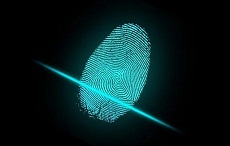
The increasing use of technology to verify one’s identity has been gradually making an impact on everyday life. Whether it’s two-factor authentication or facial recognition technology on smartphones, it is clear that identity verification is here to stay.
These days, businesses are employing stricter methods to verify customer identity. To mitigate the risk of bank and credit card fraud, two-factor authentication has become the norm for many online and mobile banking apps.
With consumers losing $56 billion in identity theft last year, this article will look at some of the ways technology is working to counter such threats.
Behavioral Biometrics
Physical biometrics are already commonplace, with many smartphones and home security systems using facial and fingerprint recognition technology. However, the biometrics industry continues to evolve with the Behavioural Biometrics Market size forecast to reach $4.8 billion by 2026.
Behavioral biometrics analyzes behavior patterns to detect someone’s identity based on factors such as keystroke rhythm, typing speed and pressure, mouse movements, and fingertip size. Since each individual interacts with a device uniquely, certain biometrics can be used to differentiate the behavior of a legitimate user and that of an imposter.
This technology is already being used by businesses to counter fraudulent activity. The Royal Bank of Scotland (RBS) has successfully used the behavioral biometric software, BioCatch, to detect such activity. The bank became alerted to a suspicious transaction in one of their customer’s accounts when the user typed on the number keys at the top of the keyboard, as opposed to on the side which the rightful account holder used. A mouse wheel was also used to navigate the bank’s website, whereas the customer would drag the mouse. As a result, RBS blocked the transaction and managed to prevent a fraudulent seven-figure transfer out of the customer’s account.
Fraudsters will need to innovate their tactics to circumvent biometric technology. According to a report by the Dawes Centre for Future Crime at University College London (UCL), deepfakes are one of the most serious criminal threats posed by AI and amongst the top 20 concerns for criminal facilitation within the next 15 years.
ID Scanning
ID scanning software is now routinely being used by businesses to validate customer identity. It is common for passport images to be scanned using webcams or mobile devices in order to authenticate user identity and reduce the risk of identity theft.
ID scanning technology is up to 20 times faster than manual typing, provides a cost-saving to businesses and offers quick identity verification processing for customers. Replacing the need for data entry, ID scanning is an attractive option, as it eliminates the element of human error and increases the accuracy of data held by companies. The digital capture and verification of customer identity can be used across many industries, including airlines and hospitality.
As the demand for greater security measures to distinguish genuine consumers from potential fraudsters continues to grow, identity verification methods will continue to develop to meet those demands. As highlighted in this article, the race to outsmart criminals is well underway.






